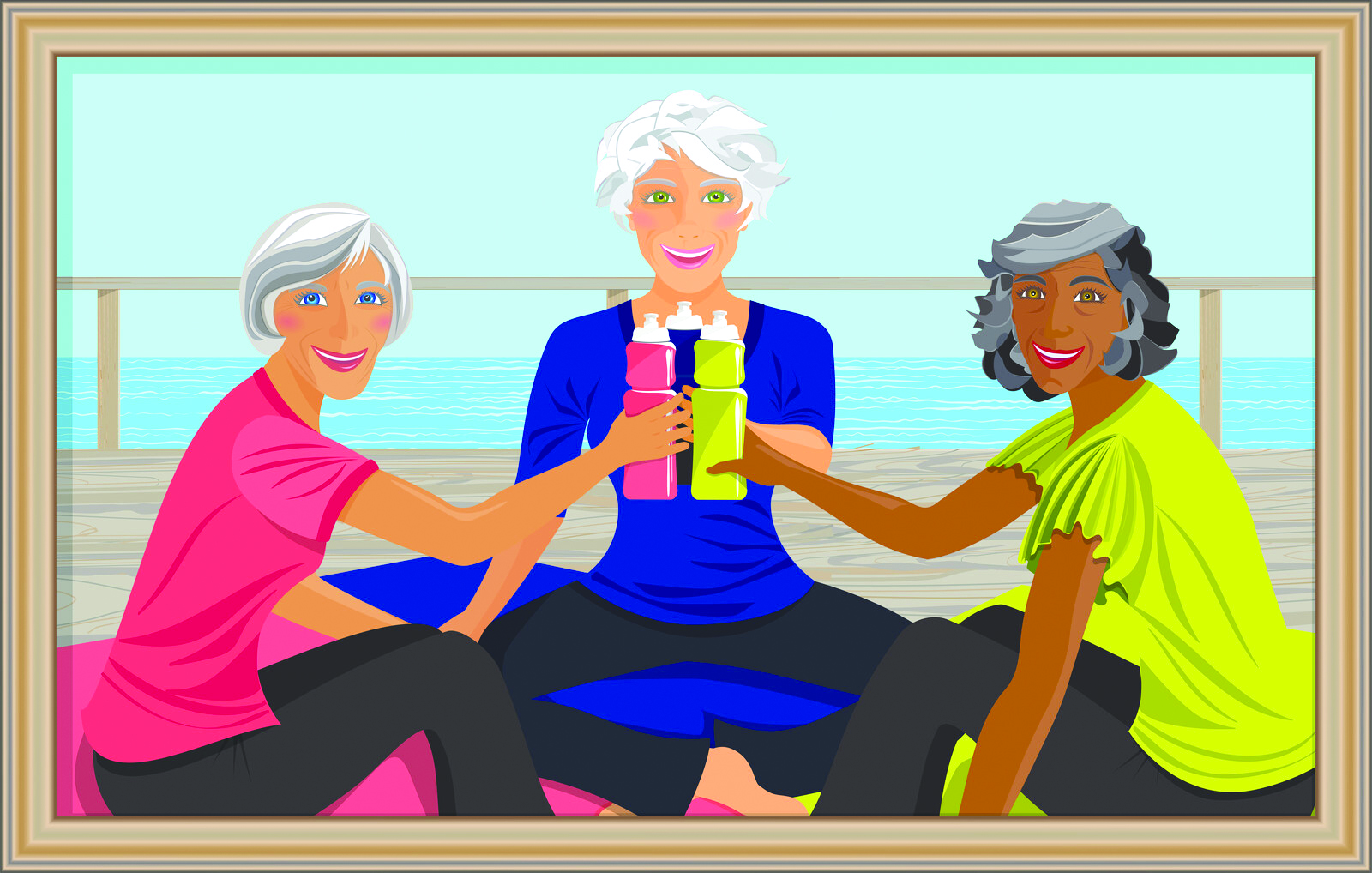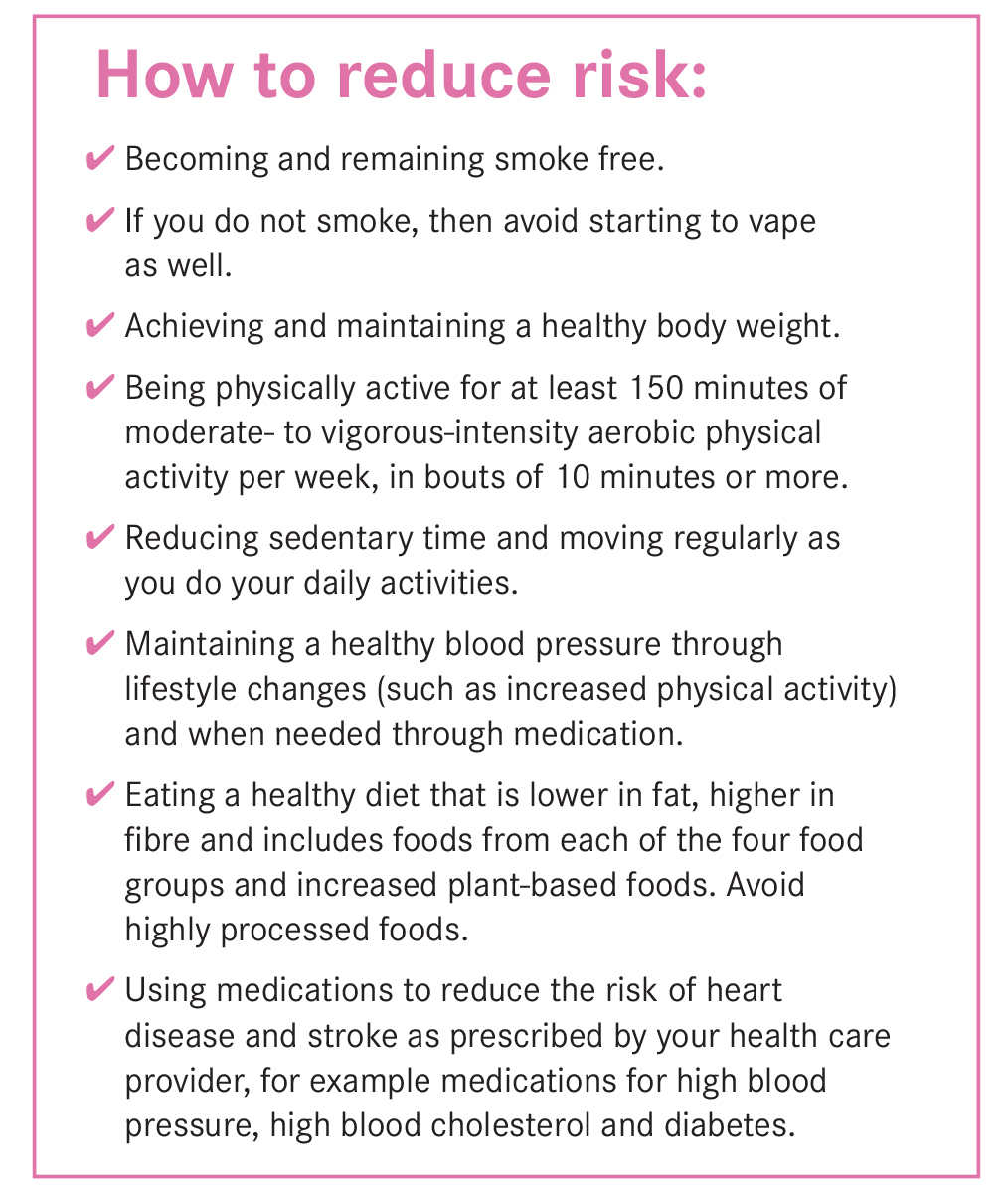Vulnerability, poor outcomes and risk factors
A stroke can happen to anyone, at any age. Yet stroke disproportionately affects women—more die of stroke, live with more damaging effects after stroke and face more challenges as they recover. A stroke is a medical emergency. If you experience any of these signs, call 9-1-1. Do not drive to the hospital. An ambulance will get you to the best hospital for stroke care.
As we know, women’s bodies are not the same as men’s and, as such, having a stroke can affect them quite differently depending on their stage of life. For instance: a woman has been shown to have a higher risk of stroke during pregnancy and when a woman’s body has to adapt during menopause, their risk of stroke increases again. Older women are especially vulnerable: they are the most likely to have a severe stroke, live with the worst outcomes after suffering a stroke, and have a much greater chance of deficits that lead to them losing their independence in the process.
Women’s lives are also different from men’s. They are used to being caregivers—not being taken care of by others—and this is how others tend to see them as well.

Signs of stroke
The signs of stroke are the same for men and women, but most women don not recognize the FAST signs listed below:
• Face: is it drooping?
• Arms: can you raise both arms?
• Speech: is it slurred or jumbled?
• Time to call 9-1-1 right away
Act FAST because the quicker you act, the more of the person you save.
In addition, ground-breaking research suggests that more women than men who have TIA symptoms actually end up having a full stroke, but to date, we still don not understand how and why strokes present and progress differently in men and women.
Women only
Some stroke risk factors are unique to women such as oral contraception and hormone replacement therapy both increase the risk of stroke. The risk of stroke is higher as a person ages especially if they have developed Afib (atrial fibrillation)—a condition that more women live with than men. Strokes caused by Afib tend to be severe and often lead to death or poorer quality of life.
Culturally speaking
First Nations, Metis and Inuit women are at greater risk of stroke and twice as likely to die from it when compared to non-Indigenous women. They are more likely to have high blood pressure and diabetes—both risk factors for stroke. Access to diagnosis, treatment and support is a major issue for Indigenous women. Remote and isolated communities face challenges reaching timely life-saving acute stroke treatment as well as recovery support. Social determinants of health such as poverty, education, affordable food and water, and unsafe living conditions have created a widening health gap. South Asian women are also more likely to have type 2 diabetes and women of African descent are more likely to have hypertension and obesity—all risk factors for stroke.
 The role of estrogen
The role of estrogen
During a woman’s reproductive life cycle, from about age 12 to 50, the naturally occurring hormone, estrogen, provides a protective effect on women’s heart and brain health. However, estrogen’s protective effect can change depending on a variety of factors and conditions.
Birth control pills (oral contraceptives) Modern oral contraceptives are much safer than the forms used decades ago as they are lower in estrogen. In women under the age of 35 who do not smoke, contraceptive use does not increase the risk of stroke. However, in a small proportion of women, oral contraceptives that combine estrogen and progesterone increase the risk of high blood pressure and blood clots. The risk is greater if you: smoke, already have high blood pressure, are over the age of 35, experience migraine with aura, have other risk factors for heart disease or stroke, or already have a blood clotting problem.
Pregnancy Over the nine months of gestation, women may develop certain conditions that put them at higher risk of heart disease and stroke including pre-eclampsia and gestational diabetes.
Menopause and HRT Menopause is a time when a woman stops having menstrual cycles. After menopause, their risk of heart disease and stroke increases. (Early onset menopause leads to higher risk). Women may also experience an increase in central body fat and LDL or bad cholesterol, a tendency toward higher blood pressure—all increasing their risk factors. Women who are taking estrogen as part of Hormone Replacement Therapy (HRT) have an increased risk of stroke and heart attack.
Making heart and brain-healthy changes
A woman’s overall risk of heart disease or stroke is determined by all of her risk factors. You can control some of these risk factors, but not all of them.
Risk factors that you can control include smoking, high blood pressure, high blood cholesterol, diabetes, physical inactivity and obesity. Risk factors that you cannot control include age, gender, family history, race and ethnicity.ϖ
Sources: Heart & Stroke Foundation, Stroke Recovery Foundation. Visit heartandstroke.ca or strokerecoveryfoundation.org.















